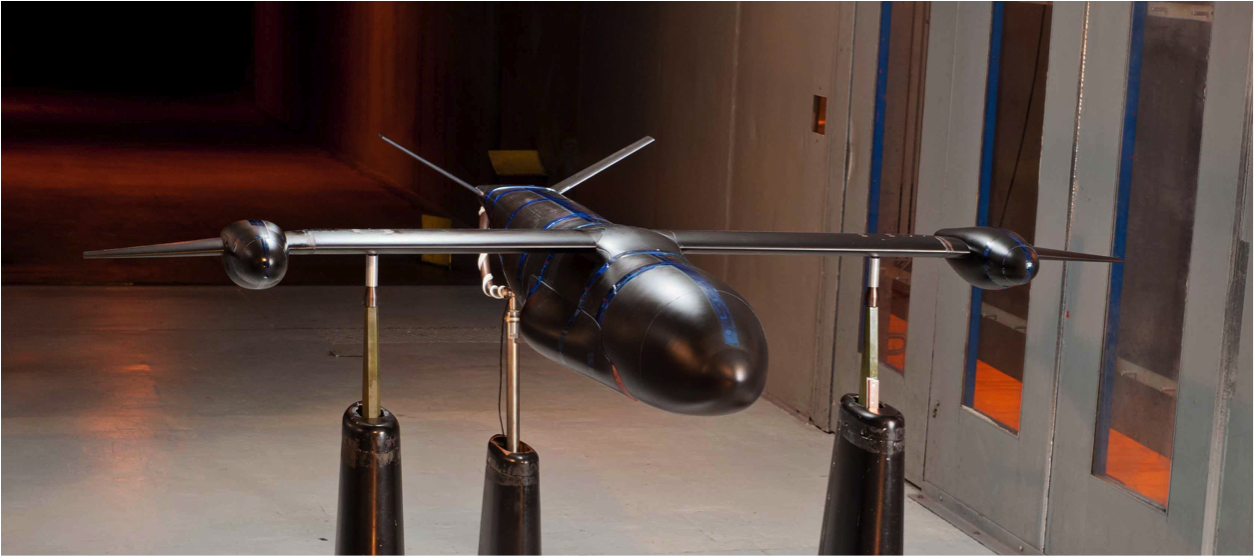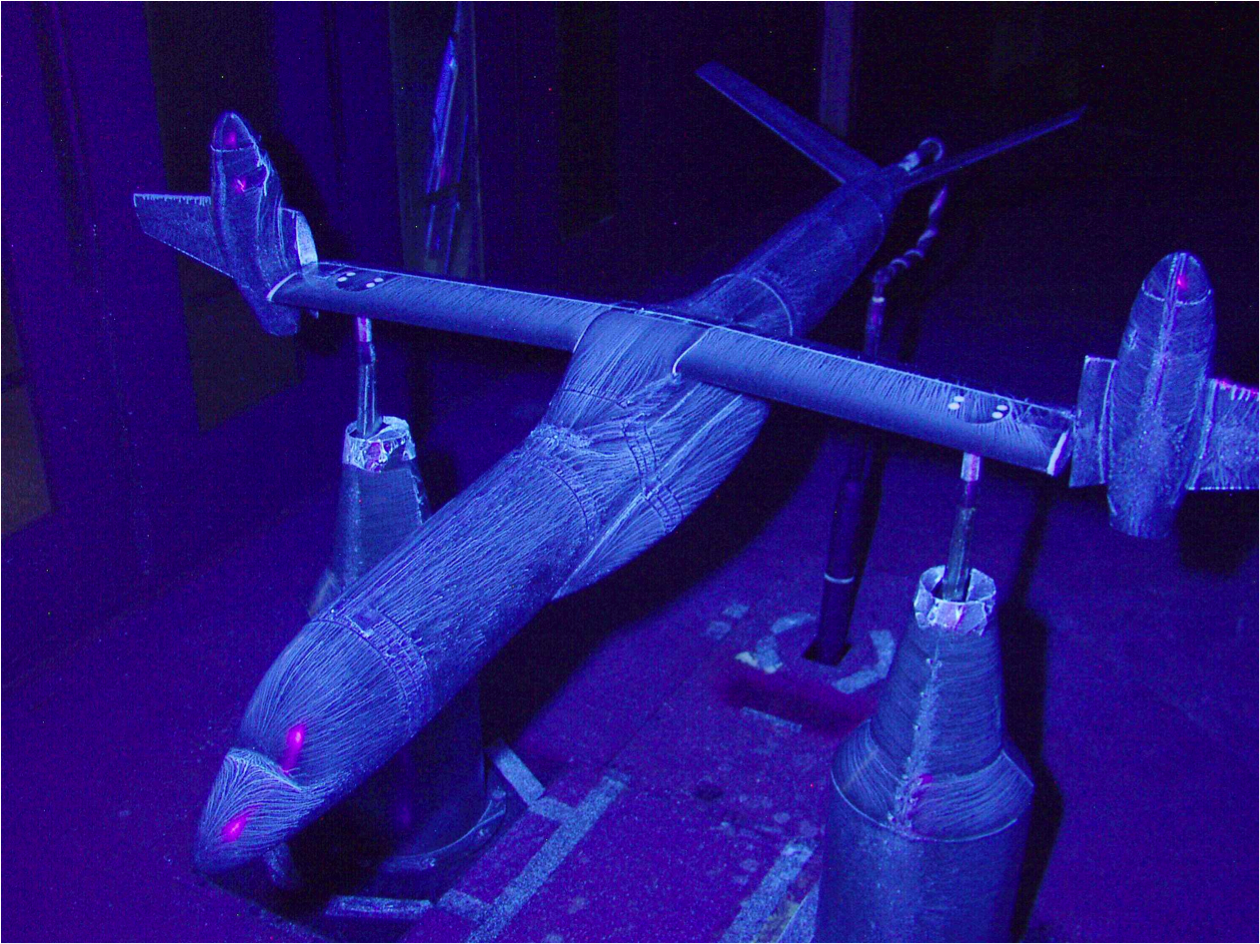Large Tiltrotor Scale-Model Test, 2012

HETR Model in airplane mode
In April 2012, NASA and the U.S. Army jointly completed a wind tunnel test program examining two notional large tilt rotor designs: the Army's High Efficiency Tilt Rotor (HETR) and NASA's Large Civil Tilt Rotor (LCTR). Testing was carried out in the U.S. Army 7- by 10-ft wind tunnel at NASA Ames Research Center. The data obtained from this test will be used to validate CFD tools and to aid in the development of flight dynamics simulation models.
The approximately 1/20th scale models of the HETR and LCTR airframes were placed without rotors on a 3-strut support system attached to the force measurement scales that sit below the wind tunnel test section. This system allowed measurement of all six forces and moments acting on the airframe. In addition to force and moment measurements, flow visualization using tufts, infrared imagery, and oil flow (shown below) were used to identify boundary layer transition and areas of flow separation.

Oil flow visualization on the LCTR model in helicopter mode
Both models were tested in airplane mode, with the engine nacelles parallel to the flow, and airspeeds of up to 200 knots. Angle of attack and sideslip angle for this configuration ranged between -10 and +10 degrees. Additionally, the LCTR model was tested in helicopter mode, with the engine nacelles tilted between 60 and 95 degrees, and airspeeds of up to 80 knots. For this portion of testing, sideslip angle ranged from -180 to +180 degrees, with angle of attack varying between -10 and +10 degrees.
Multiple wingtip configurations were tested for both the HETR and LCTR models: full airframe, full airframe without wing extensions, full airframe without nacelles, and full airframe without nacelles or wing extensions. In addition, high-speed testing was completed on the wing alone, across the same range of wingtip configurations.
The LCTR and HETR are similar aircraft, so a significant amount of hardware was shared by the two models. Both used the same support system, and they shared the same wing and nacelles. The design for the "strongback," which is the attachment point for the wing and the fuselage panels, was the same for both, but two identical copies were fabricated so that one model could be in the tunnel while the other was being built up. The fuselages, tails, and wingtips were different, but were interchangeable between the two models. This approach of using common hardware made it possible to carry out both tests with significantly less cost and time than would be necessary for two independent test programs.
POINT OF CONTACT
Gina Willink
NASA Ames Research Center
Moffett Field CA 94035-1000